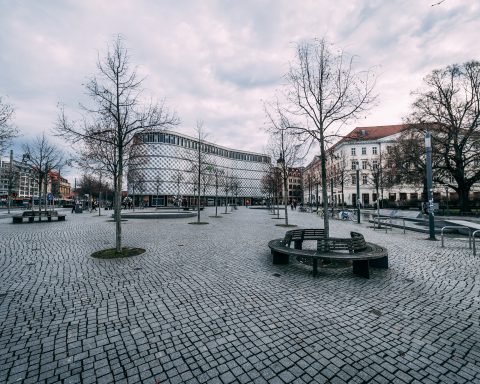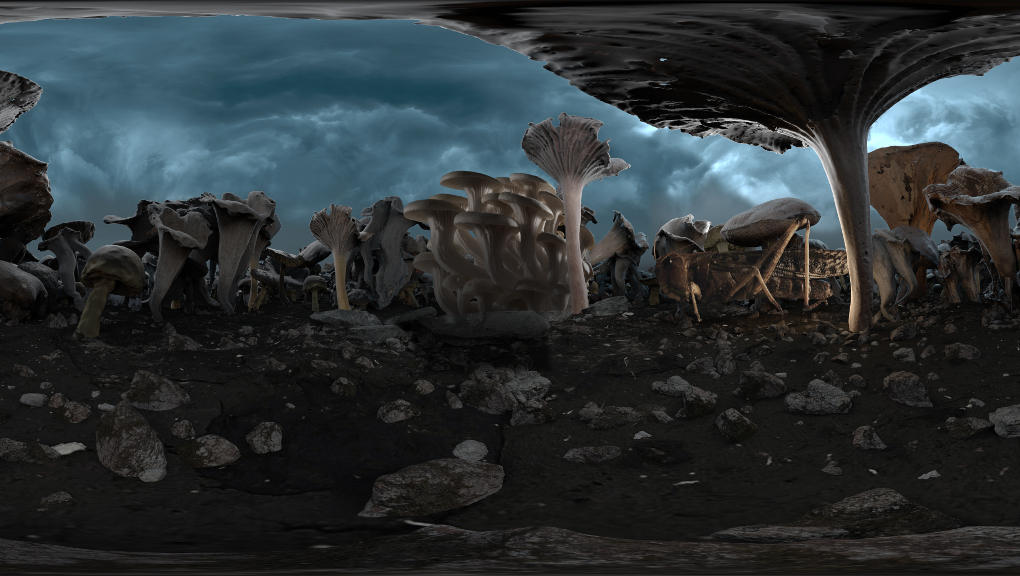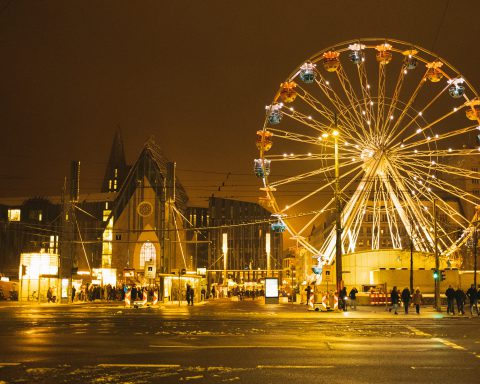31 October was traditionally a public holiday in the five German states of the former GDR. Christians in those states are mostly Protestants, and on 31 October, Protestants celebrate—no, not Halloween, but the “birth” of their denomination—Reformation Day. In many states of the old Federal Republic, by contrast, people don’t need to work on 1 November—the Catholic All Saints’ Day.
Yet this year is different: Reformation Day is a public holiday not only in East, but also in West Germany. For today, 500 years ago, on 31 October 1517, Martin Luther (1483–1546) nailed his 95 Theses against Indulgences on the door of a Wittenberg church.
Germany’s commemoration of that event is ironic in three regards.
First, Catholics in West Germany get to enjoy an extra holiday honoring a movement that broke away from their Church, while for Protestants in East Germany, this year of work is no different from others.
Second, historians debate about whether Luther really posted his theses on a church door. Some facts speak against it: Such an act wasn’t mentioned by anyone in Luther’s lifetime, but for the first time only after his death by his collaborator Philip Melanchthon (1497–1560), who in 1517 hadn’t been present in Wittenberg. Thus, in reality, Luther may just have sent his theses as a letter to his bishop, and then distributed them among other people.
Third, although posterity reveres—or condemns—him as the father of the Protestant or, more precisely, “Lutheran” Church, it wasn’t Luther’s intention to found a new church. The word “reformation” (from the Latin reformatio), which he sometimes used himself, means the renewal or restoration of something already in existence.
In any case, who was Luther, why did he set out to “reform” the Catholic Church, and what was the result?
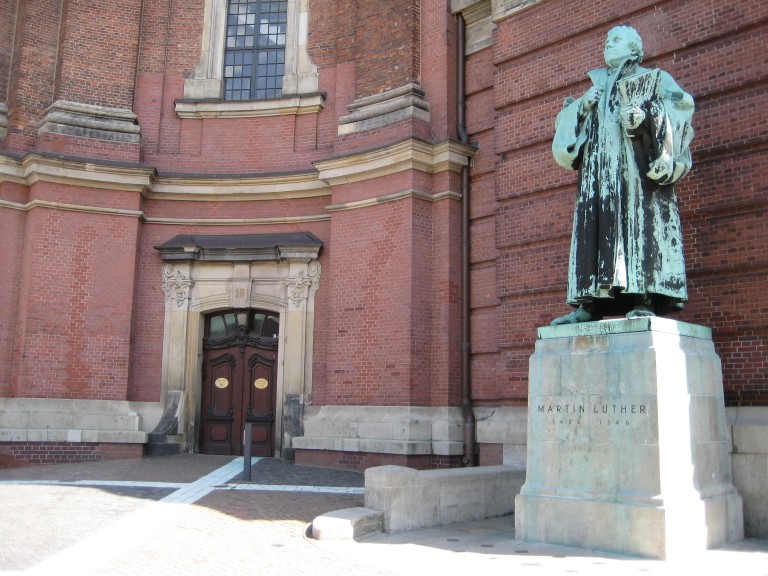
Martin Luther was born in Eisleben in 1483. One day in 1505—so the story goes—he was riding to his university in Erfurt when a thunderstorm came over him. Fearing for his life, he vowed that if God saved him, he would become a monk. Luther survived, and two weeks later joined the Order of St. Augustine in Erfurt.
He studied theology, was ordained priest and, in 1512, was appointed professor of theology at the University of Wittenberg. There, he formulated and published, in 1517, his 95 Theses against Indulgences. “Indulgences” were slips of paper that promised people the remission of certain sins; they were at the time sold by the Catholic Church.
In reaction to Luther’s criticism, the pope, in 1520, asked Luther to recant his statements. When Luther refused, he was excommunicated (that is, banned from the Church). In 1521, the (Catholic) emperor of the Holy Roman Empire also asked Luther to recant.
At the Diet (that is, imperial assembly) of Worms, Luther again refused to comply, perhaps by pronouncing the famous words “Here I stand, I can do no other.” As a result, he was outlawed, meaning that anyone could have killed him without being prosecuted.
Yet instead, after the Diet, Luther was secretly brought to Wartburg Castle at Eisenach by Frederick the Wise (1463–1525), the elector of Saxony who supported the reformer’s cause. Luther stayed at the castle until 1522, translating the New Testament from Greek into German.
In 1523, he married Katharina von Bora (1499–1552), a former nun, with whom he had six children. By 1534, Luther, along with collaborators, translated the Old Testament from Hebrew and Greek into German. He died in his birthplace of Eisleben in 1546.
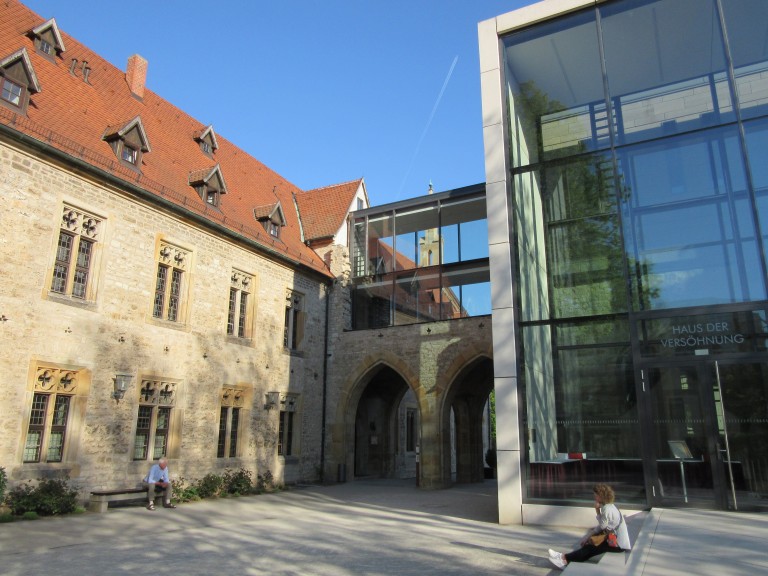
By then, the Reformation had spread to large parts of central Europe, embraced by local rulers, and was ready to spread further.
Luther kept promoting the movement as a writer, preacher and organizer. Today, Protestants form, within worldwide Christianity, the second largest group (900 million members) after Catholics (1.3 billion).
But let’s get back to what happened today, 500 years ago. Luther’s Theses were triggered by the Catholic Church’s practice of selling indulgences, through which people hoped to avoid at least part of God’s punishment for their sins after death. Part of the sales’ returns was used by the pope in Rome to build the lavish Basilica of St. Peter (still existing today).
Luther’s outrage about the Church’s greed is understandable, but the indulgences were only a symptom of a general crisis of the Catholic Church that had been evolving for centuries.
Swiss (Catholic) theologian Hans Küng (1928–2021), a dauntless critic of his church, attributes, in his History of Christianity (1994), that crisis to the Church’s gradual:
- Centralization: The popes in Rome took over the leadership of the Church in the style of absolute, universal monarchs;
- Judicialization: The Church constructed a complex legal system to regulate the lives of its institutions and people;
- Politicization: The Church claimed to stand above secular rulers including kings and emperors, and interfered with their affairs, striving for political power;
- Militarization: The Church organized violent campaigns, or crusades, against the Muslims “occupying” the Holy Land, and against Christians branded as “heretics;”
- Clericalization: The Church segregated its spiritual officialspriests and bishops – from “ordinary” believers by imposing a monastic lifestyle (celibacy) on the former.
In the course of those five long-term processes, the Church veered further and further away from its origins—the Jesus described in the Bible: He may have been married; he condemned violence; he respected worldly authorities; he didn’t judge people by rigid rules; and he conceived his movement as a community, not as a hierarchy.
Also Luther took offense not only at indulgences but at the state of the papal Church on the whole. He hoped to correct its errors, but the Church wouldn’t listen, so that he was forced to implement his proposals in a new—the Protestant—Church. Its central principles are:
- Solus Christus (“by Christ alone”): No Church, pope, priest, saint or whoever, but solely Jesus Christ mediates between God and a human. Consequently, every person is his or her own “priest;”
- Sola scriptura (“by Scripture alone”): What Jesus said and did is to be learned not from a Church, tradition or any human teacher, but solely from the Bible. That is why Luther translated the book into German—to enable ordinary people to understand or even read it by themselves, without depending on a clerical interpreter;
- Sola fide/Sola gratia (“by faith/grace alone”): People will reach salvation not by doing certain things—let alone buying indulgences—but solely because they believe in God, and God has mercy on them.
If Luther hadn’t launched the Reformation in 1517, someone else probably would have done something similar around the same time, as the Church’s errors were growing ever more blatant.
Still, somebody else may not have been as intrepid, charismatic or brilliant as the professor from Wittenberg. His personality and actions did have downsides—for example, he despised Jews, and his Protestant Church has traditionally maintained close ties with the secular state. Followers of the Reformation depended on princes, who protected them from the pope—yet in return, Protestantism became so submissive to those rulers that it may have hampered the evolution of democracy in a country like Germany.
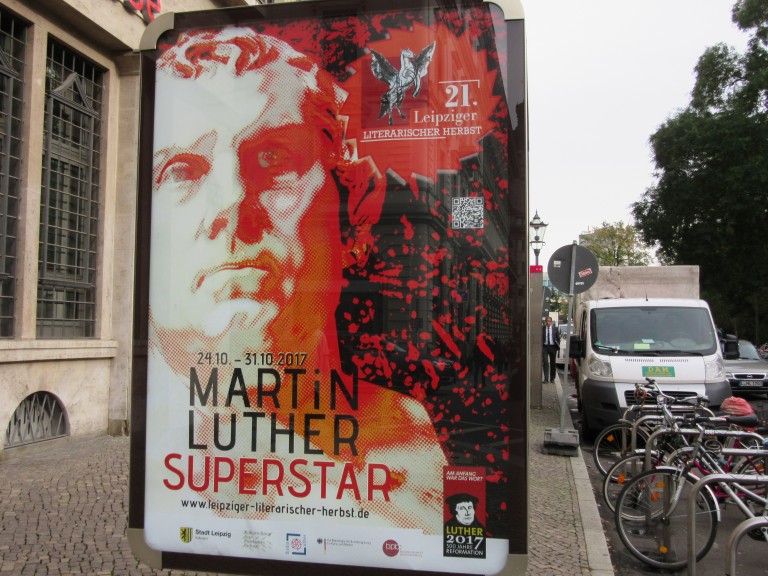
For other reasons, Germany is right to honor Luther today.
He renewed Christianity regarding major problems, some of which the Catholic Church hasn’t solved until now (it even did not ban the sale of indulgences before the 1560s, half a century after Luther’s Theses). He founded a denomination that, especially in Germany, has enormously enriched philosophy and culture—Luther himself created timeless hymns. By translating the Bible into vernacular German (although others had done it before) and widely circulating the product using the printing press, Luther crucially contributed to the establishment of the “High German” language that Germany speaks today.
The Leipzig angle: Luther visited the city of Leipzig, which adopted Protestantism in 1539, multiple times. For the Reformation’s 500th anniversary in 2017, the city set up a website with information on Luther in Leipzig, and a calendar of commemorative events such as concerts, talks and exhibitions that took place from 2016 to 2018.
In honor of the 2017 anniversary of the Reformation, Leipzig Ballet premiered Mario Schröder’s new work to Bach’s Johannes Passion.

